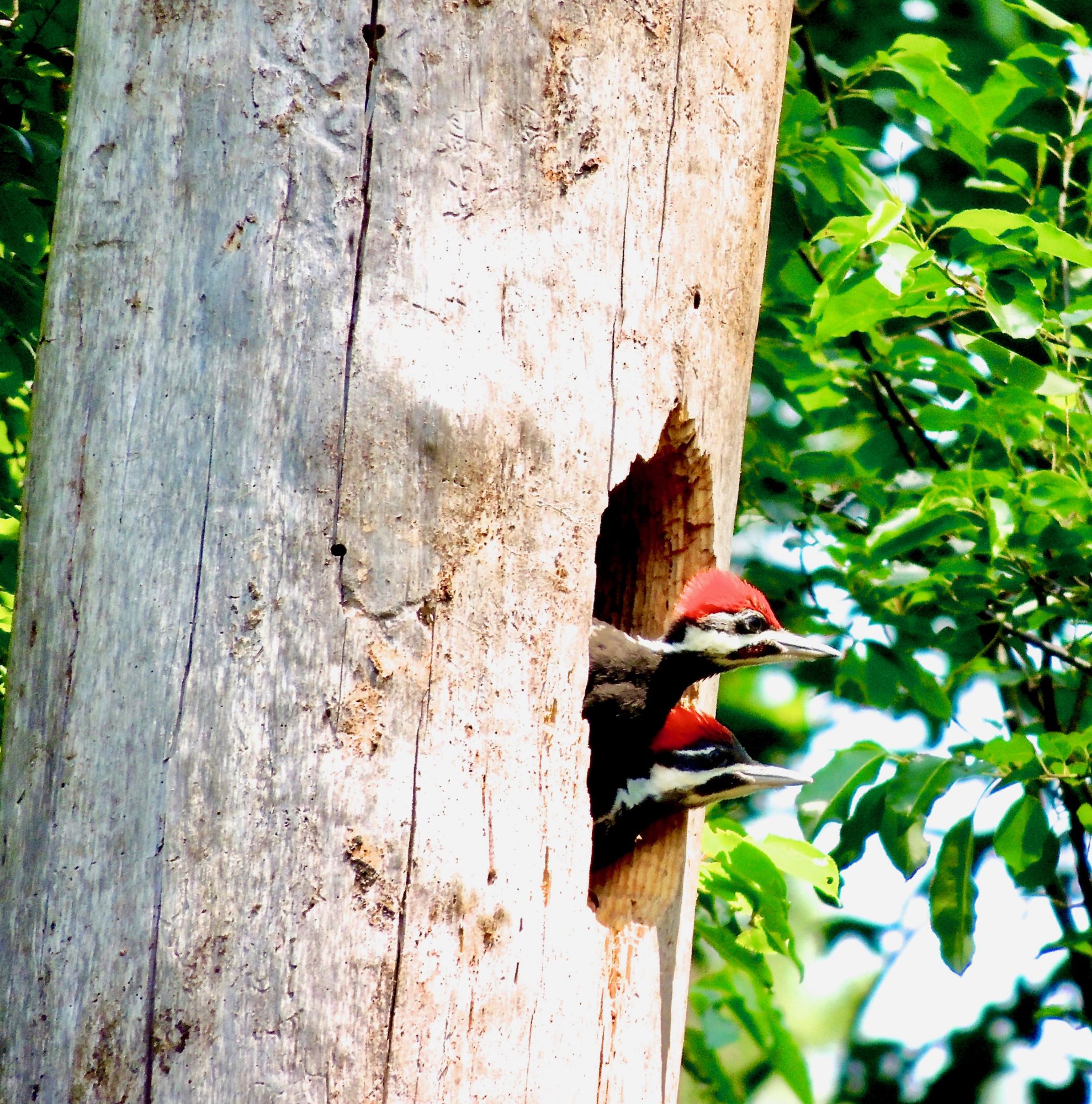by Mary Reid Barrow
The “Killing Fields” was the name my daughter gave years ago to the area in the photo above. It’s off the trail at the Narrows in First Landing State Park.
Knowing what I know today, I would have told her a better name would be the “living fields.”
Dead trees, or snags, as they are called, are anything but dead. Though the trees may have served out their lives as trees, they live on as homes for birds, like ospreys that build their nests in the v-shaped crooks or the tiny brown-headed nuthatch and the huge pileated woodpecker that nest in their holes:

Snags are often teeming with insects that live in or lay their eggs in the softening wood and are meals for birds and other animals. Tree snag nooks and crannies live on as hidey holes for small animals and reptiles. Crevices in the wood provide storage places for winter seeds and nuts.
Mosses and lichens get a foothold to grow on declining trees. Then as they disintegrate, snags, lichens, moss and all feed the forest floor and the marsh with organic material.
In all, the National Wildlife Foundation says dead trees provide habitat for up to 1,000 species across the United States.
I once had a friend, Bonnie Denault, who gardened for wildlife and she literally had a landscape company move a snag to the corner of her yard and anchor it there to provide wildlife habitat.
Another friend. Trista Imrich, who owns a landscape company, Wild Works of Whimsy, had her dying oak tree pruned way back but left the shortened trunk and limbs of the tree for wildlife. Trista calls it her “habitat tree.”
Ospreys make the strongest visible case for the value of tree snags. The big birds have been returning to their nests on snags in the marsh around the Narrows for many years. This marsh is one of the few remaining spots in the area where ospreys nest the way they have historically:

“With the development of waterfront property, the first thing many property owners do is cut down any dead trees.” Reese Lukei, our local raptor expert, said. “But dead trees play a valuable role in nature.”
Because First Landing is protected and tree snags are allowed to stand, the osprey habitat remains. Waterfront homeowners are beginning to make up for this loss of habitat by building osprey nesting platforms. But because of the decline in snags. ospreys also are forced to look for nest sites in all the wrong places, like cell towers, ball field lights and marine buoys.
Because of the road and walking trail, the marshes at the Narrows also offer visitors a rare opportunity to observe on foot, rather than by boat, osprey nests in this traditional tree snag habitat.
LRNow has developed an interactive map of the nests in the area, complete with photos and GPS coordinates, to help you find the nests. Find more information and the map link at (map has been removed).
The snags at First Landing are living examples for all to see how alive with life a dead tree can be.
Do you have a favorite tree, a secret tree grove or neighborhood climbing tree that you love? Let me know your stories about trees, the critters who live in them and the insects that dine on them. Send an email to maryreid@lrnow.org. You also can sign up below to be notified when my blog comes out.